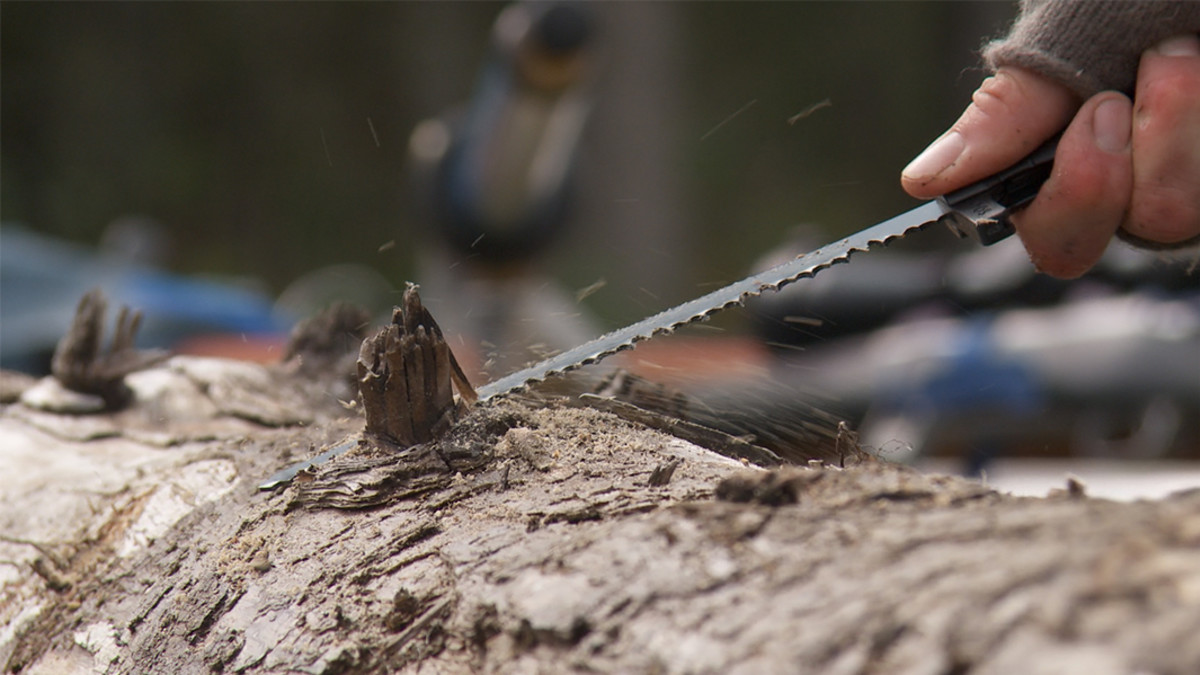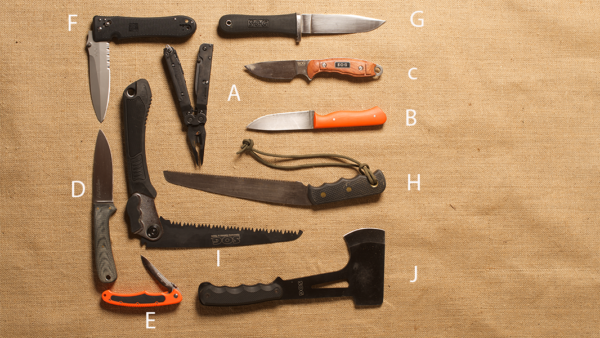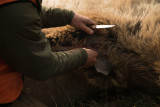
I think of knives and blade tools as gear. They are cool to look at, exciting to buy, and a pleasure to toy around with. This creates a sort of problem for hunters, who tend to accumulate a lot of excess blades that they don’t really need.
If you’ve got endless funds for gear, this isn’t a problem. But if your knife-buying habits are affecting your ability to get, say, a good pair of boots, that means your knife-buying habits are impeding your ability to hunt as hard as you can. Which is to say, I’ve seen a lot of hunts ruined by foot problems, but I’ve never seen a hunt ruined by a knife problem. So what knives and blade tools do you really need?
It depends on what you’re doing.

Multi-tool
Never leave home without it. Your multi-tool should have a serrated blade, a bone saw, needle-nose pliers, and a bit receiver that can handle whatever bits are necessary to do quick repairs on your rifle, bow, or other equipment. Pictured here (item A) is a SOG B66-N Power Assist. A great thing about SOG multi-tools is that you can customize them with whatever blades you want.
Skinning Knife
While you can certainly hack your way through a skinning job with a multi-tool, a quality skinning knife is nice to have along. In fact, it should be regarded as essential. Excellent options include B) custom knife by Brian Goode; C) SOG Huntspoint skinning knife; D) Phil Wilson Smoke Creek drop point; E) Havalon Piranta (a replacement blade razor knife that is lightweight, compact, and extremely sharp).
Utility Knife
Lets you keep your skinning knife sharp and ready for its intended purpose; can be used for cutting everything from rope to wood to cheese. Pictured here: F) SOG Pentagon Elite (folder, with serrated); G) SOG NW Ranger (fixed, non-serrated).
Bonesaw
Useful when hunting large-sized big game, especially in the backcountry. Allows you to dismantle carcasses efficiently and cleanly, with no jagged bones, and to remove skull caps when you want to keep the antlers or horns of an animal without having to pack out the entire head. Also handy around camp for fire making and various woodcraft tasks. Pictured here (H) is the Knives of Alaska Bone Saw.
Woodsaw
Let’s take a look at the SOG Folding Camp Saw (I). This can easily double as a bone saw, but the more aggressive tooth pattern makes it better suited for wood. Great for building blinds, trimming shooting lanes, or cutting firewood and performing camp chores on extended backcountry trips.
Hatchet
SOG FO9-N Hand Axe (J) is a lightweight hatchet, tad heavier and more cumbersome than a bone saw, but it serve equal functions with butchering. Also works great as a camp tool for driving tent stakes, splitting kindling, and fashioning emergency tools and equipment from native wood supplies.






Conversation